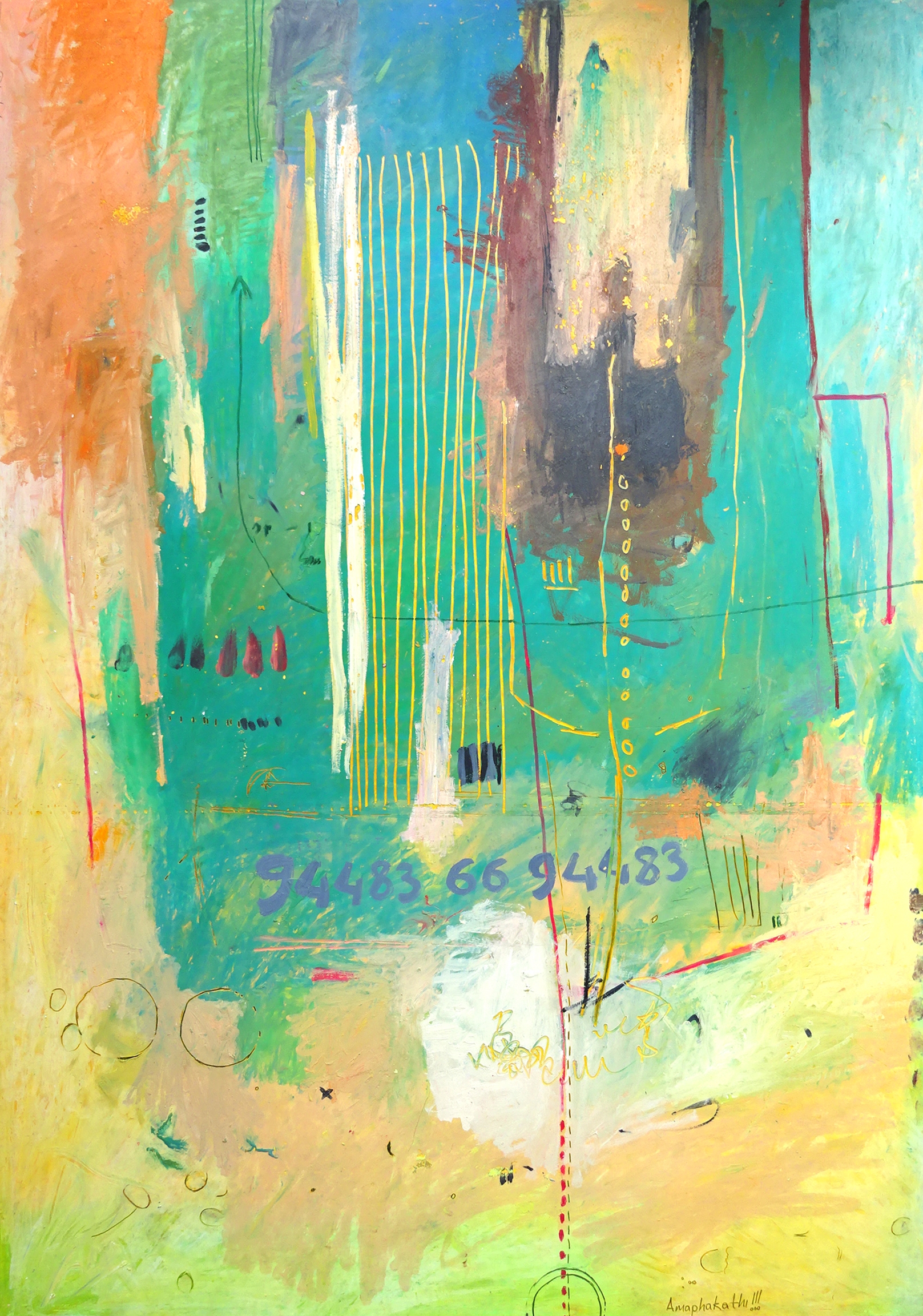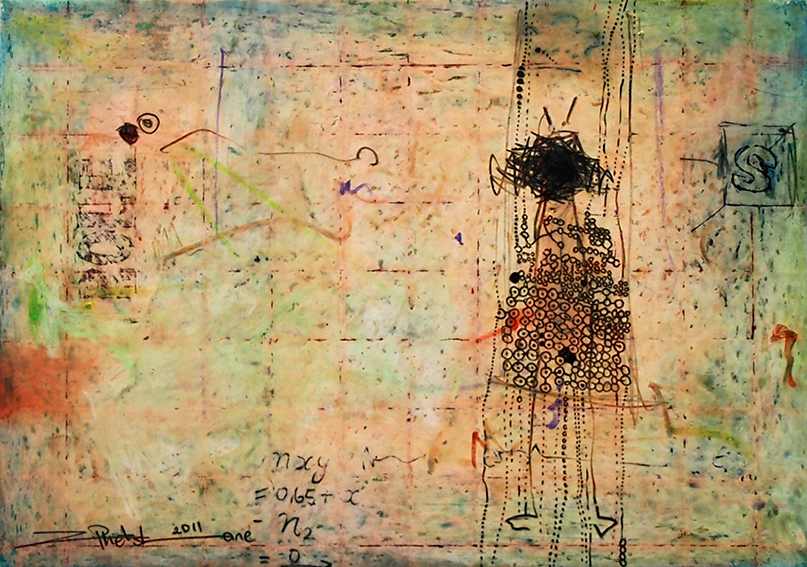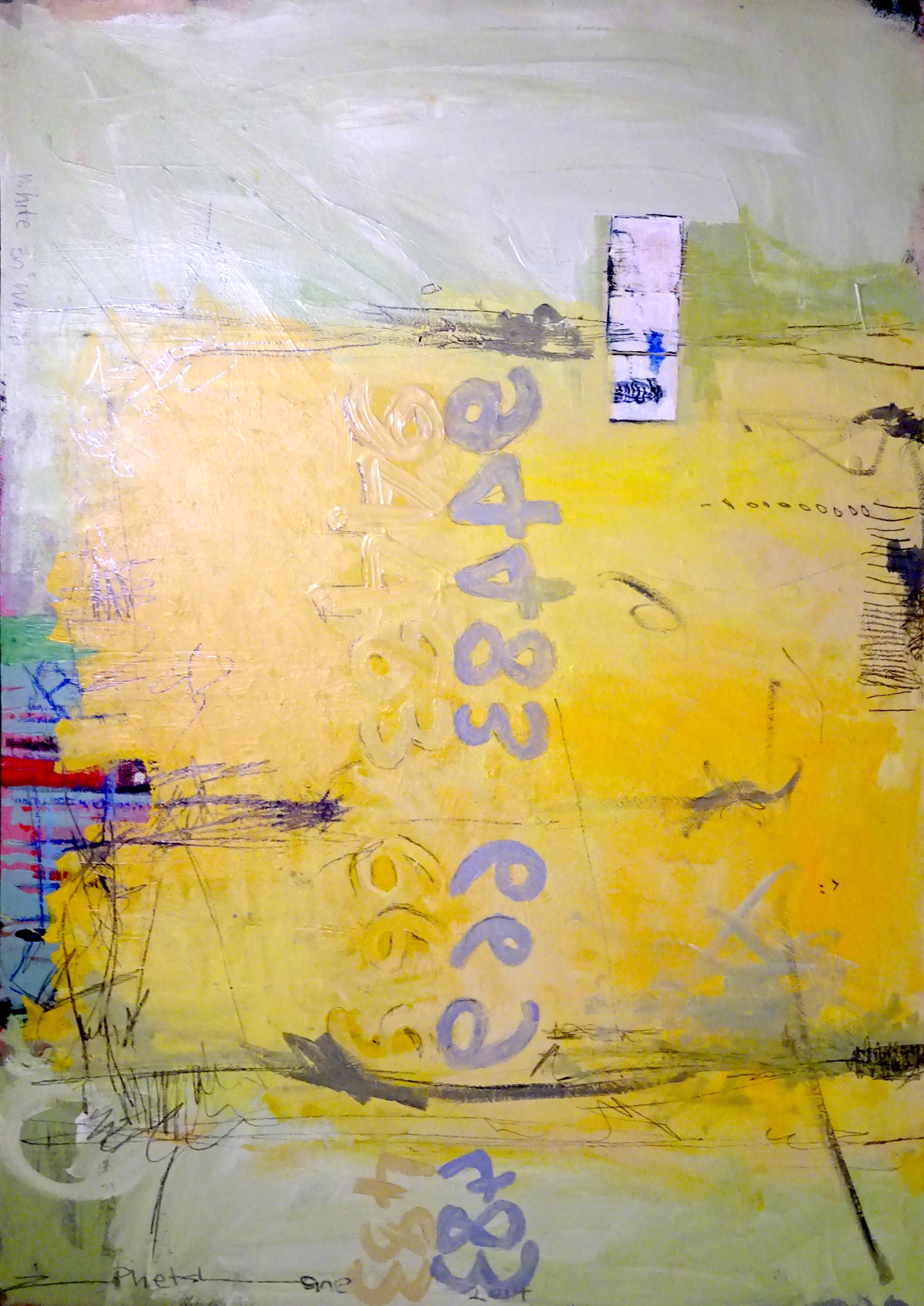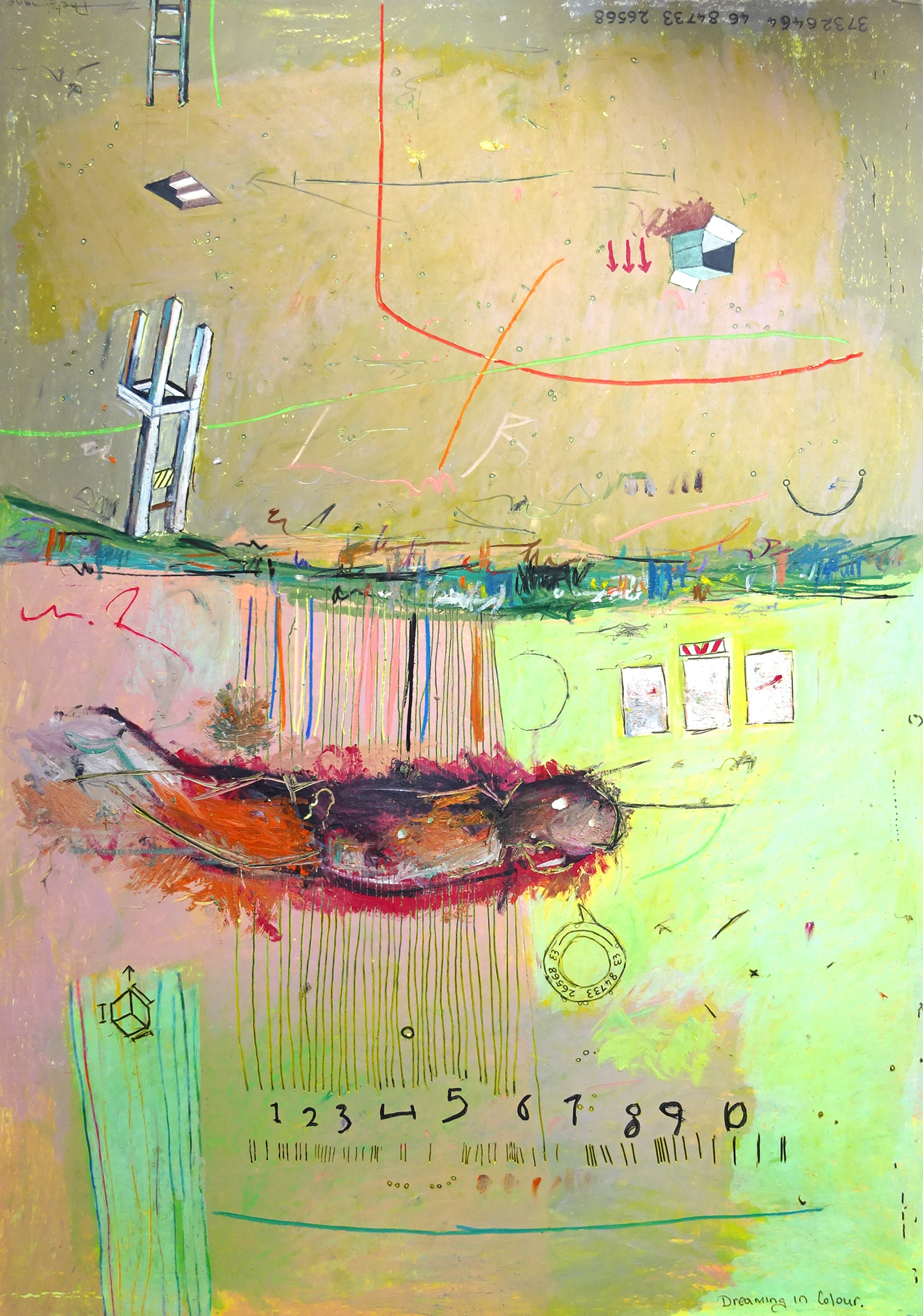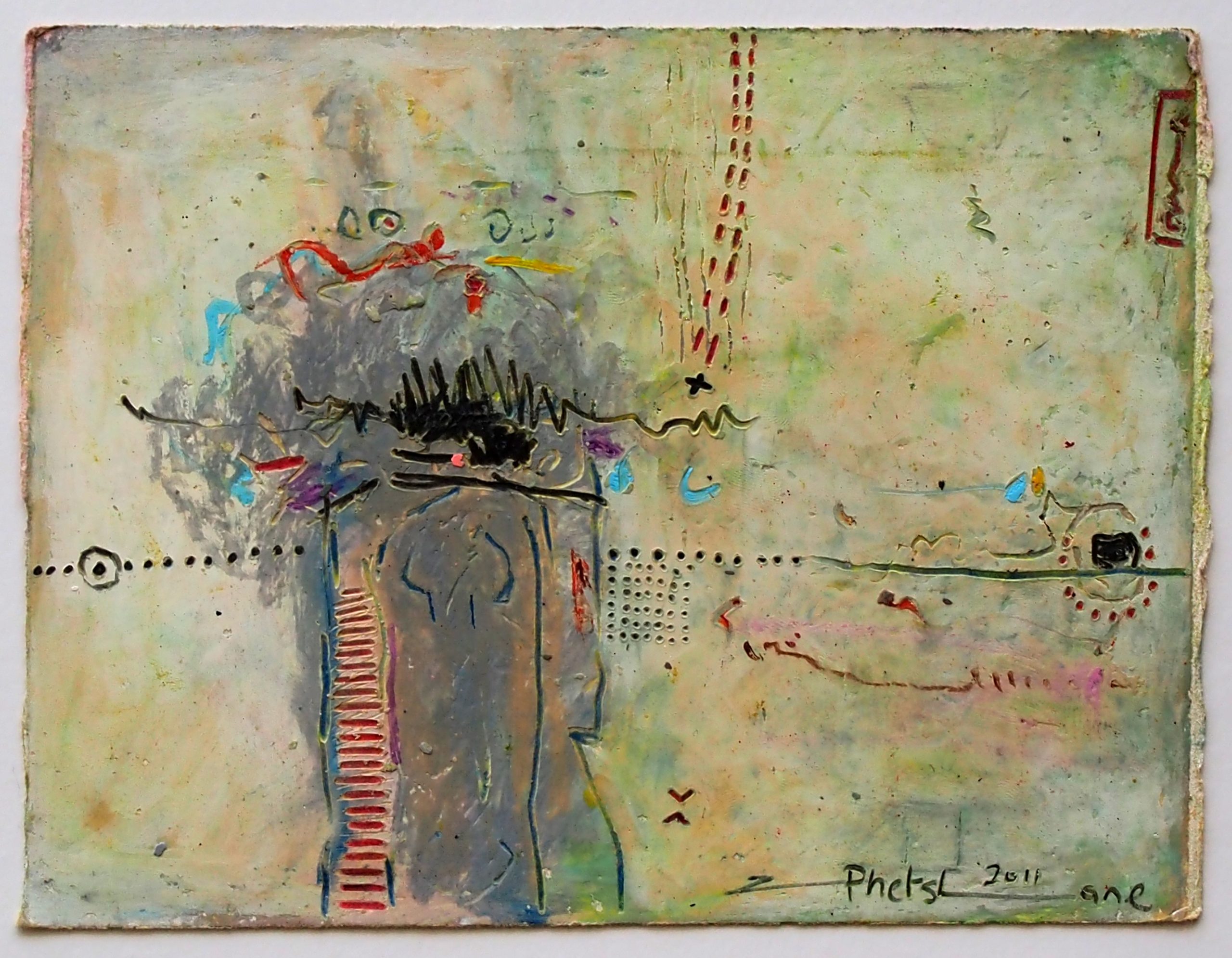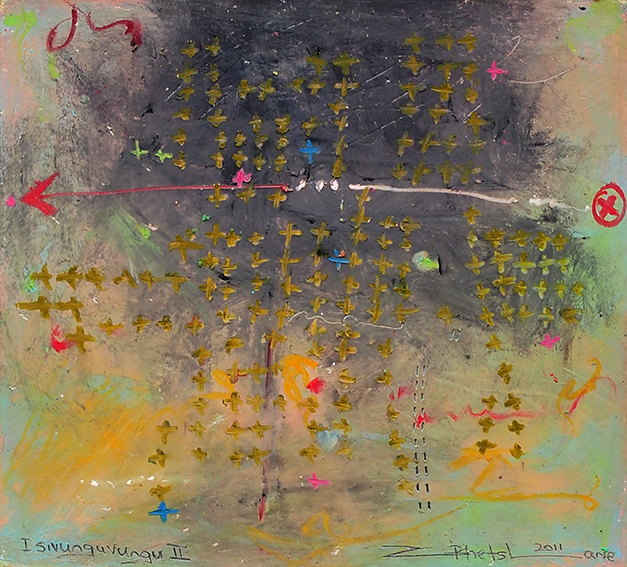
Phetshane uses colour as a language, scratching and painting on surfaces to get textured surfaces. The artist works with many layers of solid colours in pastel – creating colourful abstract landscapes. He then ads smaller texts and imagery – creating interesting and intricate patterns and details. The artist juxtaposes objects (chairs, bread pulls, boxes, road signs, water-marking and painted stairs) as metaphors. “I love playing around with objects and infuse numbers as a language or sentence, from time to time I use the last four digits from ID numbers.” Along with the use of various objects, the artist’s work mainly consists of abstract colour fields. “The use of the abstract came as a result of a fire at the Artist Proof Studio a few years ago. I started producing experimental pieces and I would use found objects as part of the prints. After losing more than 100 prints due to the fire, abstract was a destruction in the process of trying to find something completely outside the arts. At the time I was willing to get a job and forget about art. For some reason I always find myself going back to the studio and play around with inks and use anything I find interesting.”
On a subconscious level, these objects and the abstract representations deal with social issues surrounding women, children and human settlement. During Phetsane’s process mathematics and numbers also come into play. ”I started experimenting with calculations on my artworks, using square objects and infusing chairs, doors and Pyramids of Giza; creating illusionary spaces, stairs between legs in some of the chairs, painting open roofs; playing around with reflections of light. I play with illusion and fuse calculations in every art work.”
Mathematics has a big influence on Phetshane’s work, as he believes we use it in our daily lives. Furthermore, the artist is very interested in the role of the conscious and subconscious when producing art. Whilst mathematics encourages a very linear and conscious line of thought, the artist relies on the subconscious as part of his technique. He seldom plans a work and rather sees his work as a journey and a process. In doing so, the end result always speaks for itself.

